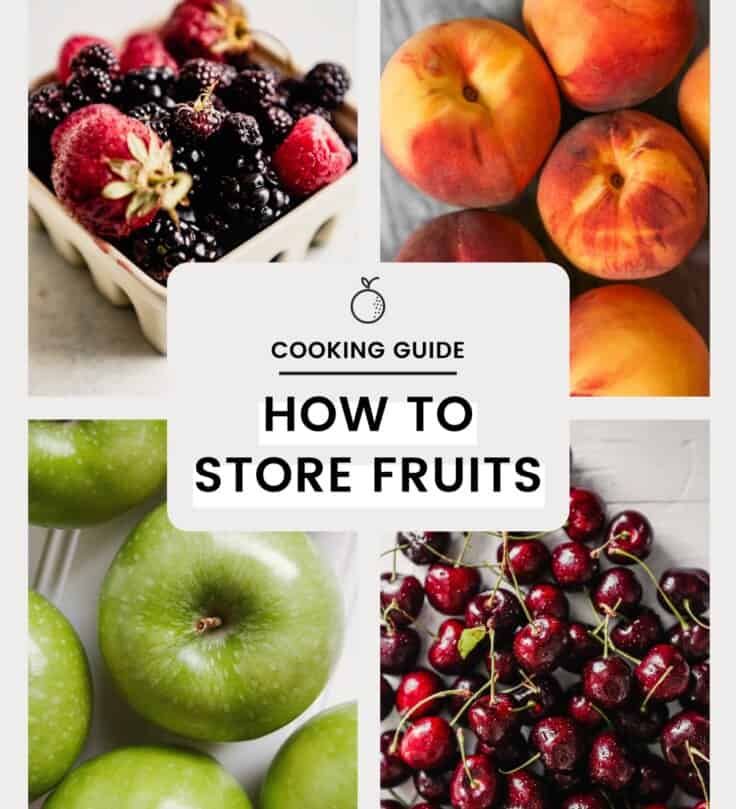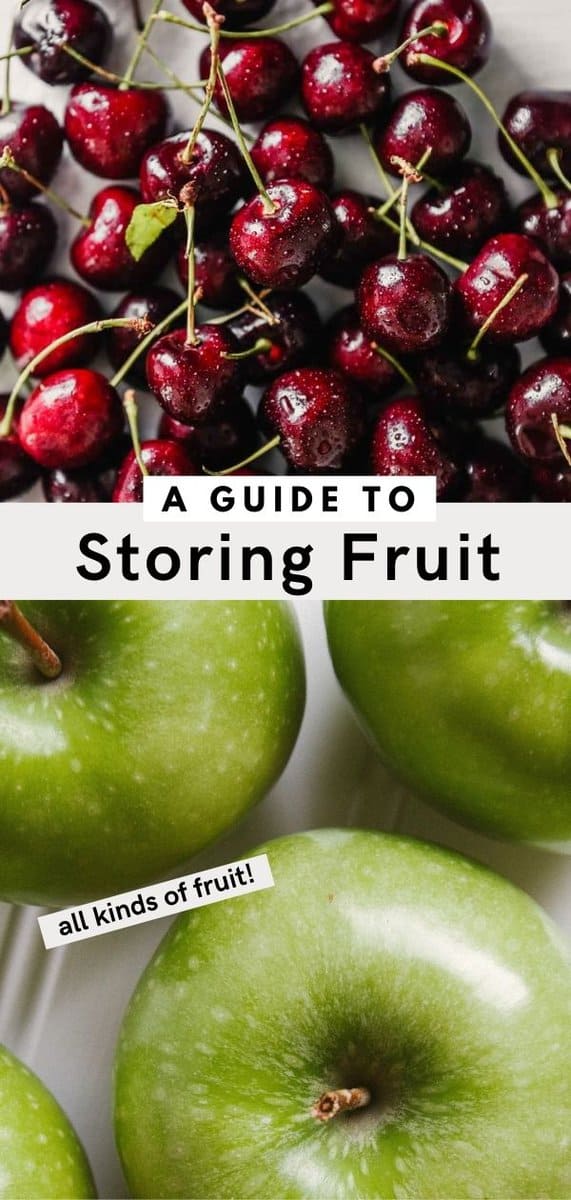Keeping fresh fruit on hand can be complicated for a number of reasons; depending on where you live, it can be hard to find nice quality fruit, it can deteriorate in a matter of days, or the price of fresh fruit is so much higher than syrup-filled canned fruit. No matter the reason, I’m here to give you all the tips and tricks for storing fruit so you can enjoy it, not pitch it (or avoid it altogether).
Whether you’re reading just to learn how to make your fruits last longer and prevent future decay or simply to make meal preps smoother, consider bookmarking this so this guide to storing fruit is just a click away!
From when to wash and when to cut your loss, this epic guide will give you the ins and outs of storing some of the most common fruits you can find.
Fruits and Veggies Storage Guide
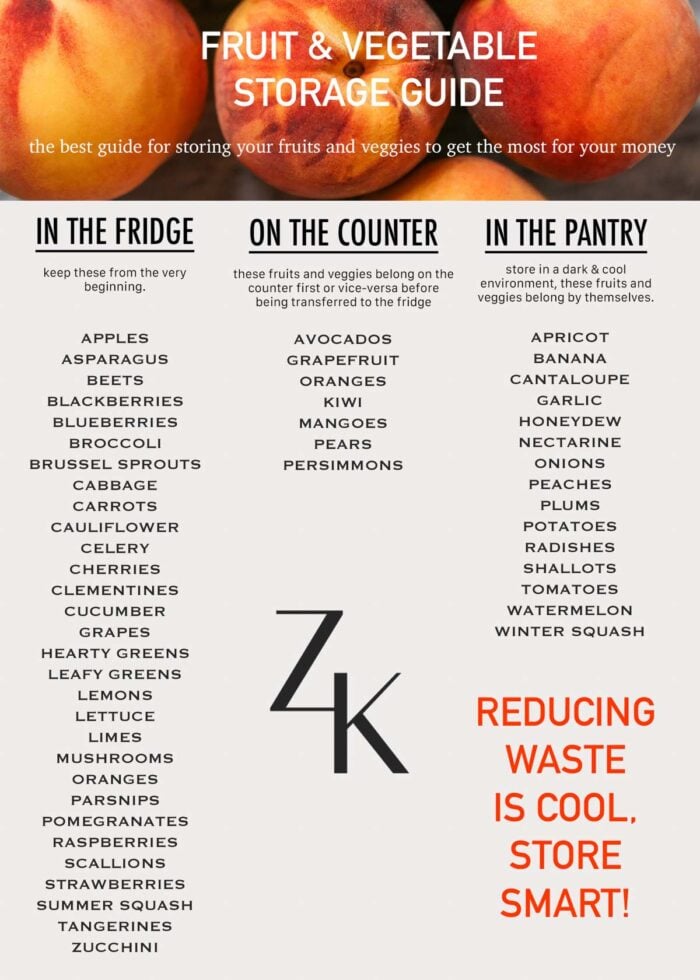
FRIDGE FRIENDS:
Guide to what fruits should be stored in the refrigerator.
- Apples
- Avocado
- Blackberries
- Blueberries
- Cherries
- Clementines
- Grapes
- Grapefruit
- Kiwi
- Lemons
- Limes
- Mango
- Oranges
- Pears
- Persimmons
- Pomegranates
- Raspberries
- Strawberries
- Tangerines
PANTRY PLAYMATES:
Guide to what vegetables should be stored in mild temperatures.
- Apricot
- Avocado
- Bananas
- Cantaloupe
- Grapefruit
- Honeydew
- Nectarine
- Oranges
- Peach
- Pear
- Persimmons
- Plum
- Tomatoes
- Watermelon
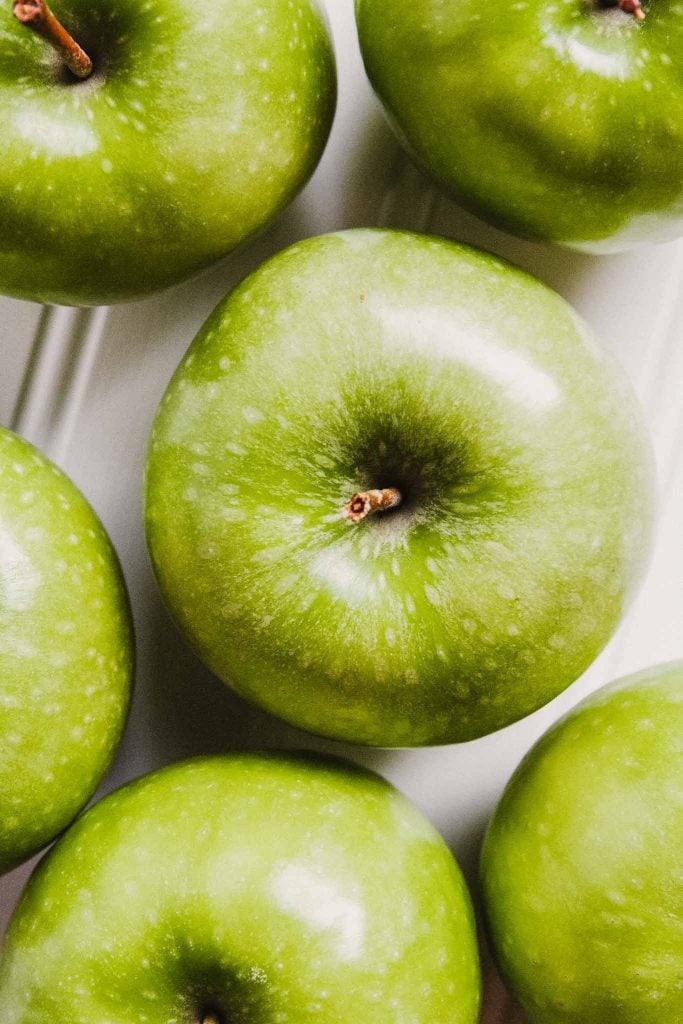
Apples
Apples are a staple in most households. And with a wide array of options, including Honeycrisps, Fujis, Granny Smiths, Galas, Golden Delicious, Red Delicious, and more, there’s an apple for every preference.
Store all kinds of apples in the crisper drawer of your refrigerator. Stored this way, your apples will stay crisp and flavorful for up to three weeks. After that, consider turning them into applesauce.
Though apples supposedly keep the Doctor away, I’m not sure that’s still the case when cooked into this delicious Apple Crisp!
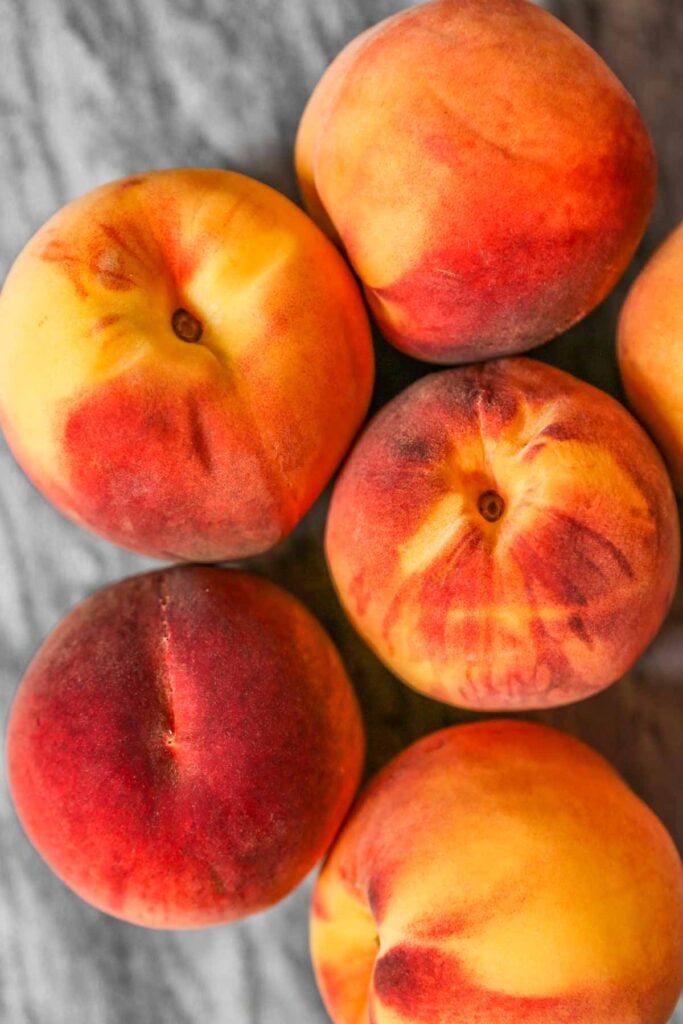
Apricot / Nectarine / Peach / Plum
Stone fruit is also fairly simple to store and can last up to five days at room temperature. There are a lot of exterior factors, such as how ripe the stone fruit was when purchased and when it was picked.
Refrigeration should be used as a last resort for saving stone fruit—cool temperatures negatively impact the fruit’s texture. Eat or use them in a recipe before opting to toss them into the fridge. Once refrigerated, stone fruit should be cooked before eating to cover up the texture change during refrigeration. Consider sautéeing or simmering and serving over oatmeal or yogurt.
Celebrate peach season with this stunning Peach & Gouda Galette, or go the savory route and try our Turkey, Peach & Basil Sandwich recipe.
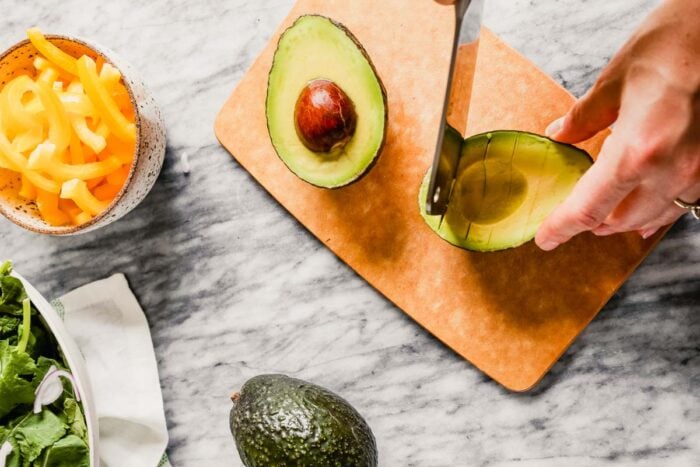
Avocados
Avocados are a bit more finicky (take it from someone who’s tossed her fair share). Store avocados at room temperature until ripe, then place in the refrigerator (this stops the ripening process) until ready to use or for up to two weeks. You can also do this vice verse-store unripe avocados in the fridge, then remove them and allow them to ripen on the countertop for a couple of days as needed.
Avocados can make for a great topping or guacamole but check out our one-of-a-kind Avocado Grapefruit Salad recipe.
Bananas
It’s bananas, B-A-N-A-N-A-S, how easy a monkey’s favorite snack is to store! Simply store at room temperature for a week to a week and a half. Avoid storing other fruits next to bananas as they release ethylene gas which will cause other fruits to ripen faster. On the flip side, if you want a fruit to ripen fast, store it next to some bananas.
Once bananas are overly ripe, peel and place them in an airtight container and store them in the freezer for smoothies or banana bread.
An all-time favorite is our Banana Bread Oatmeal recipe. If you haven’t given this a try, you must be straight-up bananas!
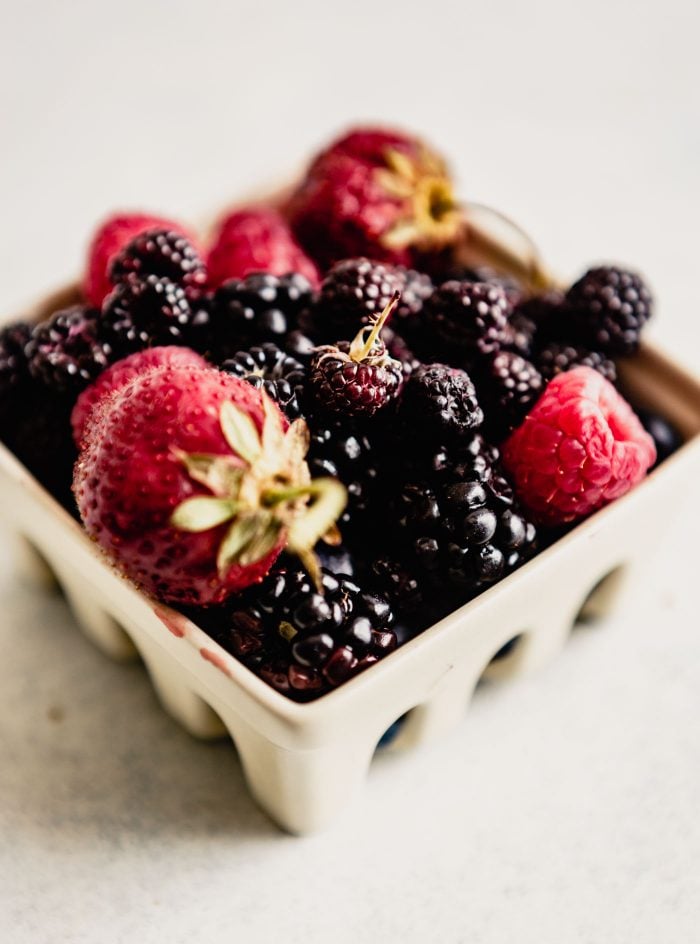
Berries
Blackberries / Blueberries / Raspberries / Strawberries
Berries pack important antioxidants, which in turn prevent aging, tissue damage, and even some diseases. Blackberries and raspberries store best if arranged in a single layer on a paper-towel lined plate or container. Stored this way, they should last about one week. Discard any damaged or moldy strawberries or blueberries before storing them (in original packaging) in the refrigerator for up to one week.
For a fruity delight, try this Fruit Tart with Mascarpone Whipped Cream & Whole-Wheat Olive Oil Crust.
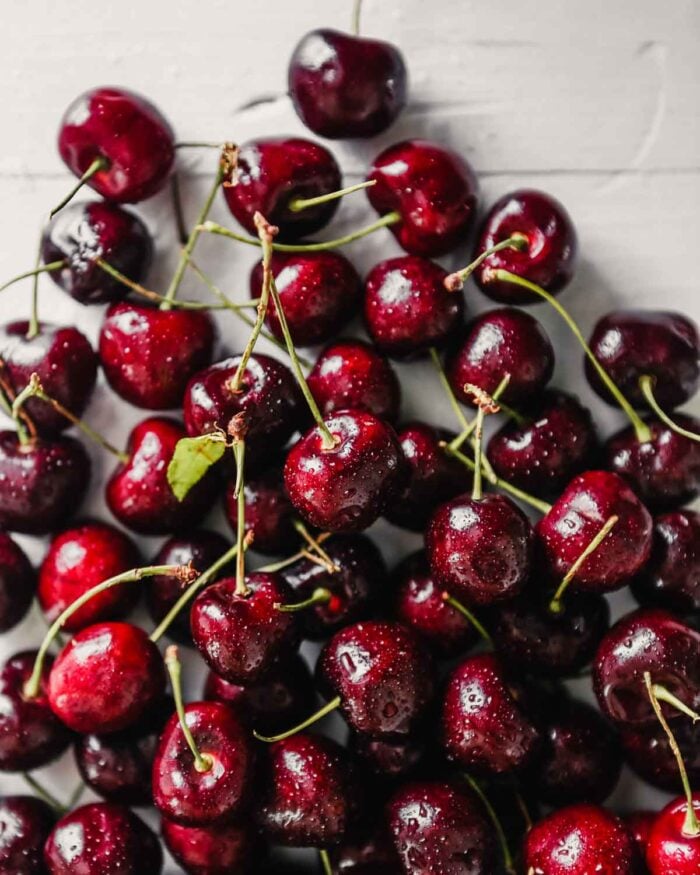
Cherries
Cherries are simple to care for and store but do have a short lifespan. Make sure you can eat cherries within a week’s time (best within five days though). Cherries will stay fresh longer if stored in the fridge inside a breathable plastic bag or a bowl.
Make the most of fresh cherries in this bomb Kale Salad!
Clementines
Clementines can be stored in the crisper drawer for up to one week but really are best if eaten within five days of purchasing. This fruit is super rich in healthy antioxidants, fibers and of course, Vitamin C, so they’re always a great choice.
These Mini Cardamom Pavlova with Cranberry Curd and Spiced Citrus pack an assortment of citrus spiked with allspice!
Grapes
Grapes are a great on-the-go snack, they should be stored in a bag or bowl in the fridge for no longer than a week. Check out this delicious Grape Salad Lauren developed for Cuisine at Home!
Grapefruit
This special citrus fruit requires just a touch more care. Grapefruit can be stored at room temperature for up to a week or in the crisper drawer for up to three weeks.
Grapefruit & Campari Tea Cakes are the perfect companion for future tea parties.
Kiwi
Kiwi is the perfect blend of sweet and sour! Kept in the refrigerator, they can last up to five days. To ripen kiwis, place in a brown bag at room temperature for a few days (toss a banana in the bag to speed up the process).
Kiwi is right at home in this Spiced Fruit Salad Lauren developed for Cuisine at Home.
Lemon / Lime
Lemons and limes are best when used within one week but can be stored in the crisper drawer for up to two weeks.
Perhaps one of Zestful Kitchen’s most popular recipes—Healthy Blueberry Lemon Muffins. Moist and tender, these are truly perfect muffins!
Cilantro Lime Brown Rice is incredibly easy to make and pairs well with a number of dishes.
Mango
Perfectly ripened mangoes are hard to beat. They’re great in smoothies, enjoyed on their own, in salads (like our Mango Fruit salad) and more! Mangoes should be stored in the refrigerator for up to one week. To ripen, place the fruit in a brown paper bag for a couple of days until soft to the touch.
Melon
Cantaloupe / Honeydew / Watermelon
Melons are high in essential vitamins, minerals, and even water content! Uncut melons should be stored at room temperature, out of direct sunlight, for up to five days. Before cutting into these fruits, it is necessary to wash the rind. Once cut, store in an airtight container in the refrigerator. Melon should be eaten within one week of being cut.
Homemade ice cream is a sweet spot, so I had to share this Honeydew Sorbet with Lime & Mint recipe!
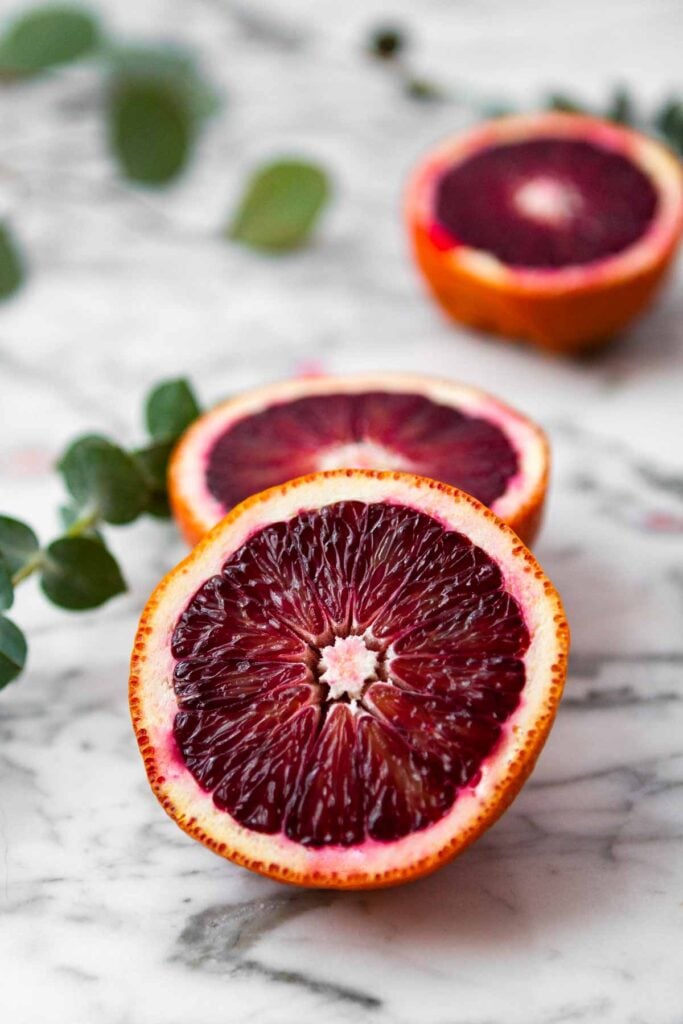
Oranges
Oranges are another tricky fellow that require both a countertop and refrigeration system. Store oranges at room temperature for three days or in the crisper drawer for up to two weeks (best when eaten within one week).
This Winter Green Salad with Oranges and Candied Pistachios is simply the best way to make use of what’s in season.
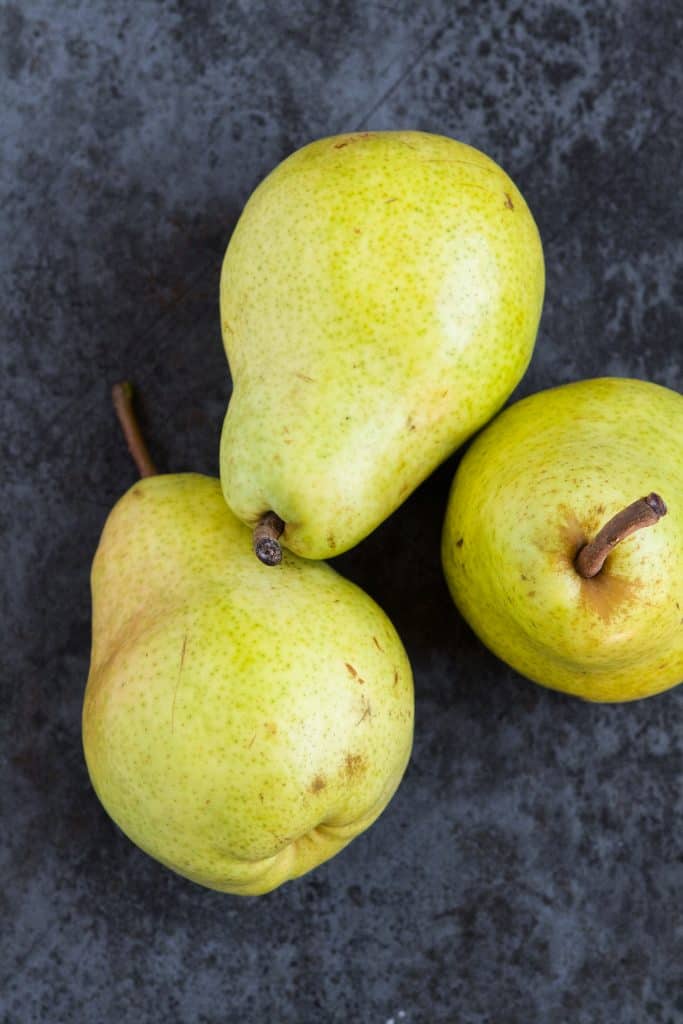
Pear
Store pears at room temperature for up to two days or in the fridge for up to one week. To ripen, place in a brown paper bag at room temperature for two days or until soft.
These Crispy Tofu Tacos with Asian Pear Slaw are so delicious that even meat lovers will be pleased.
Persimmons
Store ripe persimmons at room temperature for up to one day or in the fridge for up to two days.
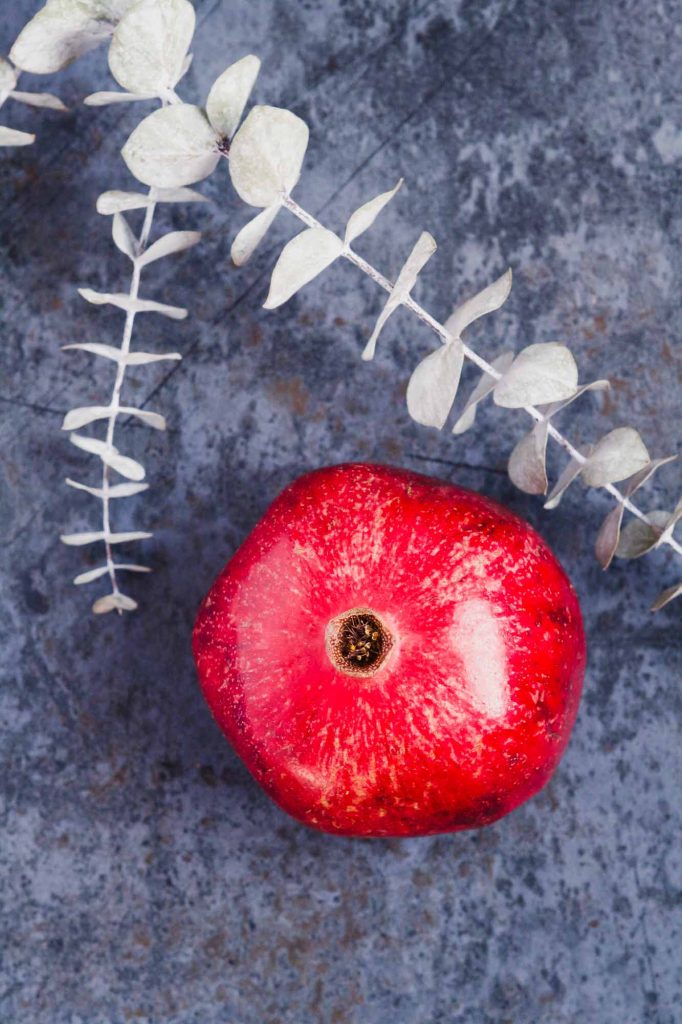
Pomegranates
Whole pomegranates can be stored in the refrigerator for up to three weeks. Pomegranate seeds (arils) last just three days and should be stored in an airtight container in the refrigerator. Be careful not to stain your fingers when you finally dig in!
Pomegranate Relish makes for the perfect holiday addition and pairs well atop greens or a grilled pork chop.
Tangerines
Store tangerines in the refrigerator for up to one week. If they’re starting to go South, use them in this Winter Citrus Salad.
Tomatoes
The debate is done and the fruit believers have won. Tomatoes are now categorized as a fruit despite their appeal in most savory dishes. Store tomatoes, stem facing down, in a cool dark location like a pantry, basement, root, or wine cellar for up to five days.
Tomatoes are NOT to be stored in the refrigerator. Only when they’re at risk of spoiling can this accommodation be deemed appropriate. Once stored in the refrigerator, tomatoes lose much of their flavor and take on a mealy texture and should be cooked into something like sauce or soup.
Use ripe Roma tomatoes in these Korean-inspired Nachos—a ZK favorite!
FREEZER FANS:
Guide to what fruits can be stored in the frigid freezer and used later.
Most ripe fruits can be frozen for later use, a great tip for saving produce from getting thrown away.
Generally speaking, most fruits freeze well and can be used in smoothies, sauces, syrups, loaves of bread, muffins and pies.
Berries
Berries should be washed, dried and arranged in a single layer on a baking sheet and frozen until solid. Once frozen, transfer berries to a zipper-lock bag and store them in the freezer until ready to use.
Check out the complete guide to how to store strawberries.
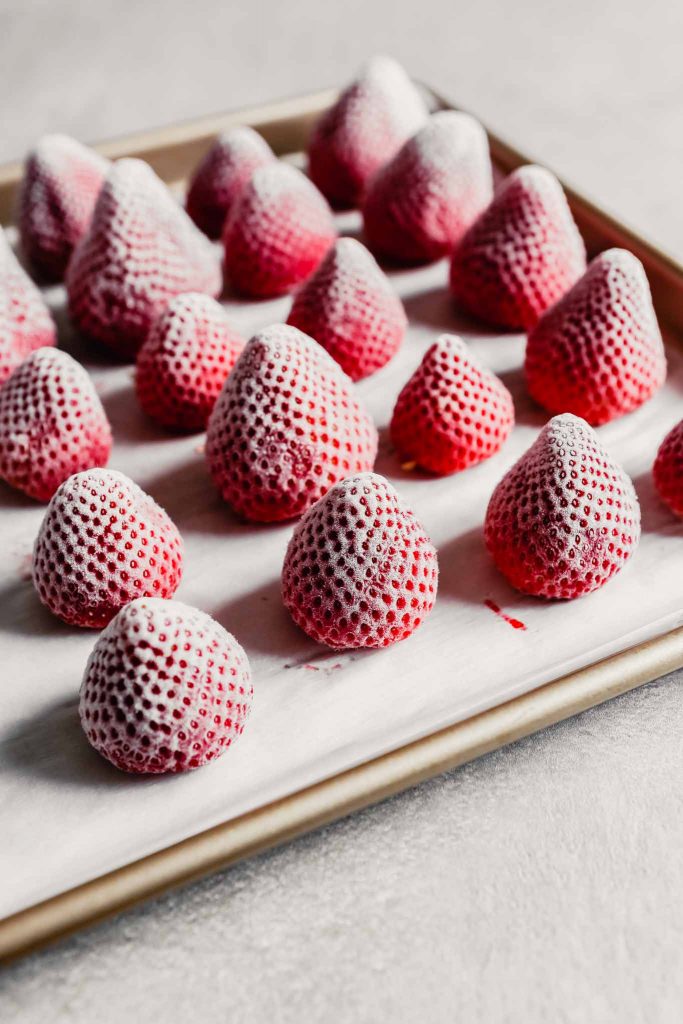
Bananas
Bananas should be peeled and stored in an airtight container or resealable zipper-lock bag in the freezer. For portion control, arrange banana slices on a parchment-lined baking sheet and freeze until solid before transferring to an airtight container or zipper-lock bag.
Stone fruit, Pears & Tomatoes
Stone fruit, pears, and tomatoes should be prepared similarly to bananas. Halve and discard the pits or seeds, and cut into chunks (removing the skin is optional but recommended for tomatoes). Arrange chunks of fruit on a parchment-lined baking sheet and freeze until solid before transferring to an airtight container or zipper-lock bag and storing in the freezer.
Citrus
Surprisingly, citrus fruit freezes pretty well. Peel and separate citrus fruit into wedges and arrange on a parchment-lined baking sheet. Freeze until solid then transfer fruit chunks to an airtight container or zipper-lock bag.
Alternatively, you can zest and juice the citrus fruit and freeze those separately in ice cube trays until solid. Store the zest and juice, respectively, in airtight containers or zipper-lock bags.
If you’re in the food-saving mood, check out these articles on how-to store fresh herbs, how to store mushrooms and how to store fresh veggies!
These are merely guidelines on what the average lifespan of fruits can be when cared for as recommended. However, this is not a guarantee. Place of purchase, household temperature, location of storage and material used to store can alter the lifespan of fruit.
Trust your gut or, better yet, all five senses when examining whether or not a fruit is passed edible status. When in doubt, toss it out!
Don’t forget reducing food waste is cool, so store smart! 🍑
